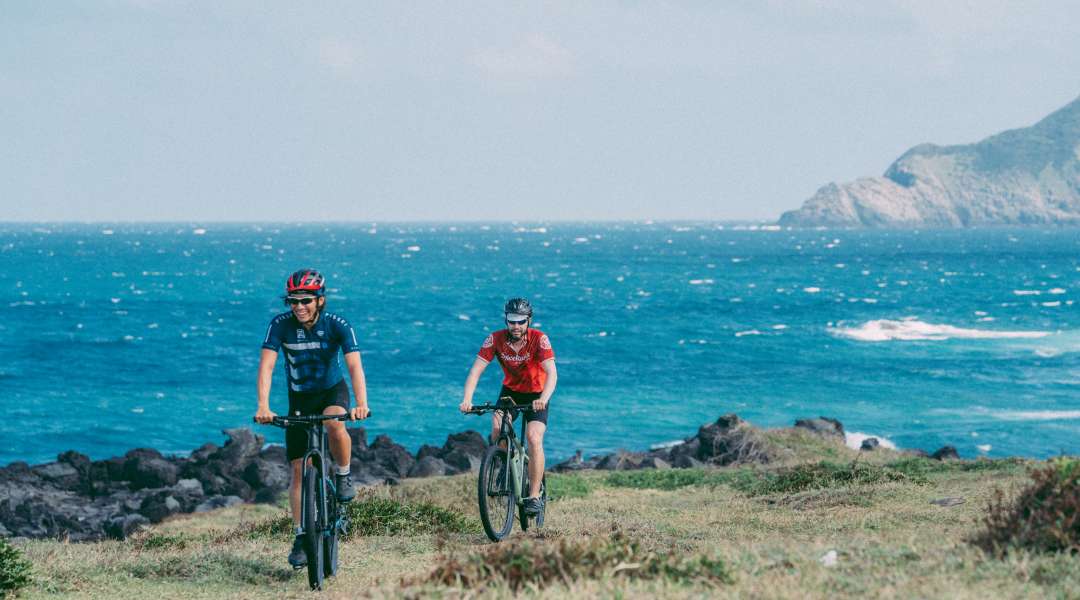
As we are once more being asked to travel from our armchairs and couches, we've decided to take you on a virtual trip to the remote Goto Islands! Located off the coast of Kyushu in Nagasaki Prefecture, the islands were an asylum to 'Hidden Christians' who had to escape prosecution in the 16th century Japan. As a result of their influences many beautiful churches appeared on the islands, and in 2018 four of them joined the UNESCO World Heritage List! Famous for their untouched natural beauty and architecture, Goto Islands are the perfect getaway.
We talked to Will Liew, a cycling instructor who lives on Fukue the largest of the local islands.
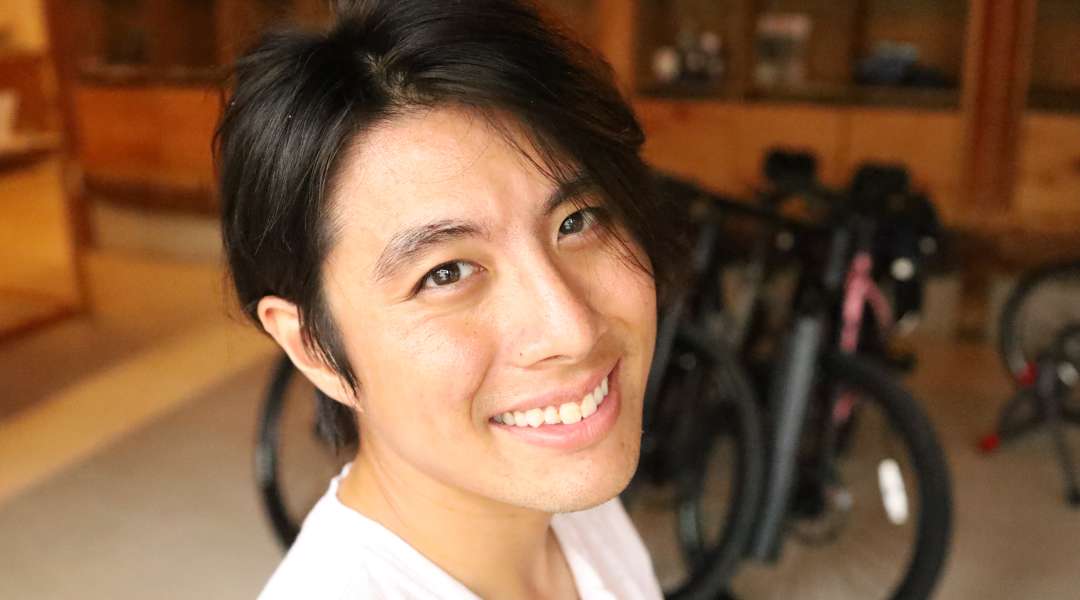
Hi! Would you mind telling us a little about yourself?
No problem at all! My name is Will Liew and I was born in Queens, NYC. But I grew up in the neighbouring state, Vermont. I’m closing in onto my 7th year living in Japan. Before being a cycling guide on the Goto islands I worked as an English teacher and a bike mechanic in Japan.
What sparked the idea to move to Japan?
While I was in university, I studied abroad in Japan during my junior year and completely fell for Japan’s charm. So after I graduated university, I followed the path of the majority of foreigners who wanted to live and work in Japan; I became an English teacher. What I didn’t know at the time, was that I would eventually become a cycling guide on a remote island and play a part in Japan’s budding tourism for cycling.
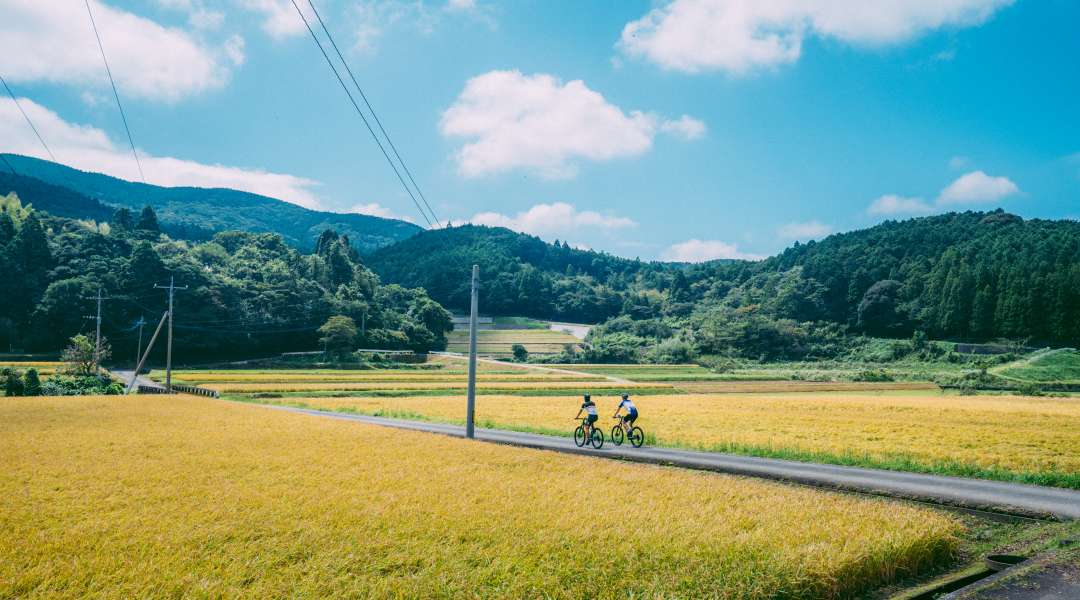
How did you end up becoming involved with cycling tours here on Fukue Island?
I lived in two prefectures (Kumamoto and Fukuoka) prior to moving to Fukue Island. During my time in Kumamoto and Fukuoka I got into cycling and entered the cycling community. I eventually became a racer for a sponsored team called VC Fukuoka and from there made many contacts that eventually introduced me to wondertrunk & co. Wondertrunk was looking for a bilingual elite cyclist who was willing to relocate to a remote island (Fukue), and I checked all the boxes. I had plans of joining graduate school and researching more effective ways to teach conversational English in Japanese schools, but with the prospect of a cycling career path opening right in front of me, I packed my bags and moved to Fukue, and I don’t regret a thing!
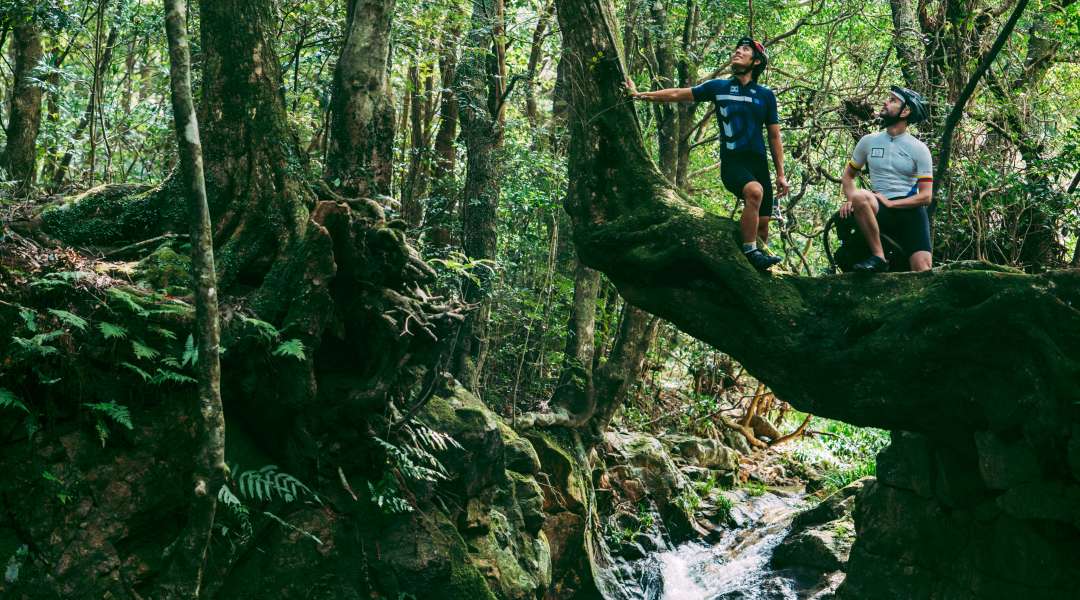
What's it like around the islands? What are the experiences in the region?
The islands offer such amazing natural beauty, that cycling is always a source for not only fun but to also calm the heart. Since the islands are to the southwest of Japan, cycling is an option that can be done all-year round. There are also multiple islands that one can explore, and each island offers different scenic views along with characteristics that are only found on that certain island. For example, the islands of Fukue and Kamigoto, while within the region known as “Goto” are totally different, with Fukue depending on a mix of its agriculture and fishing and with Kamigoto which solely relies on the ocean as its lifeline. These differences of lifestyles affect their respective islands' infrastructures which allows for roadmaps for each island to be different. After cycling on multiple islands, I’m wowed by the variety of roads, views and atmosphere of each island!
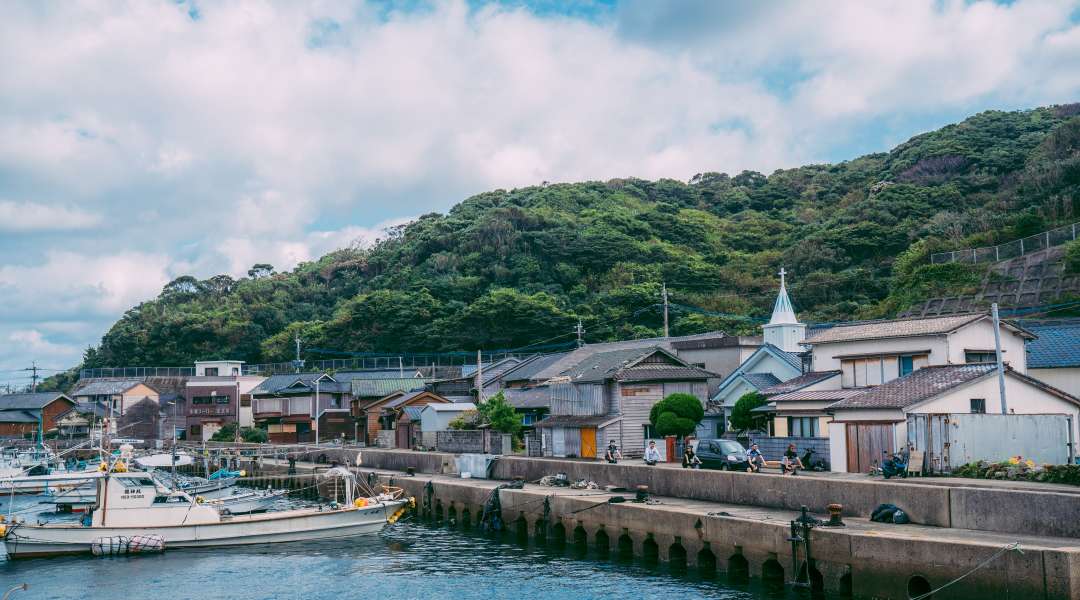
The Goto archipelago consists of over 140 large and small islands and is located 100km west of Nagasaki Prefecture. The islands’ white sand beach and the ocean are said to be among the most beautiful in Japan and panorama views from the cliffs are magnificent.
When Christianity was banned in Japan around 400 years ago, thousands of ‘hidden Christians’ moved to Goto Islands from Nagasaki to secretly keep practicing their faith. Hidden Christian sites in Nagasaki as well as the Goto Islands were UNESCO’s cultural world heritage listed in 2018. At wondertrunk & co. we offer various ways for travellers to the islands to gain a deeper understanding of this fascinating chapter of Japan’s history and to see how the culture of the hidden Christians lives on today.
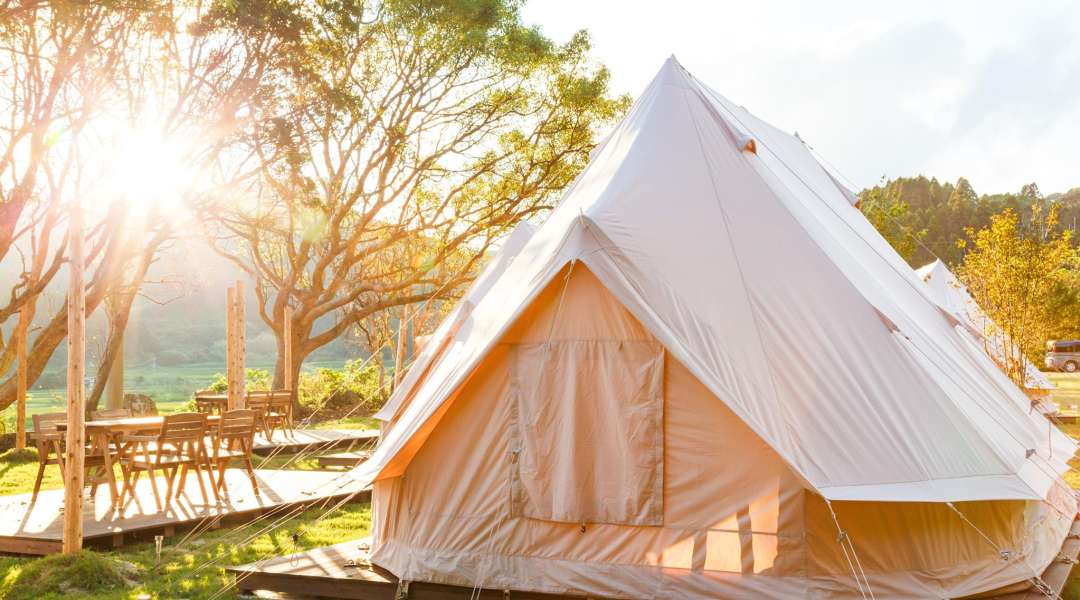
What kind of accommodation plans are on offer?
The campsite is actually a converted old school and school round that had been closed for 20 years. As young families left the Goto Islands to find work on the Japanese mainland, there were less school-age children. The school consequently closed. Now it has been transformed into the hub of the campground as an onsite boutique hotel offering a restaurant and three stylish guest rooms. The transformation strikes the perfect balance between Japanese simplicity and Nordisk open space living.
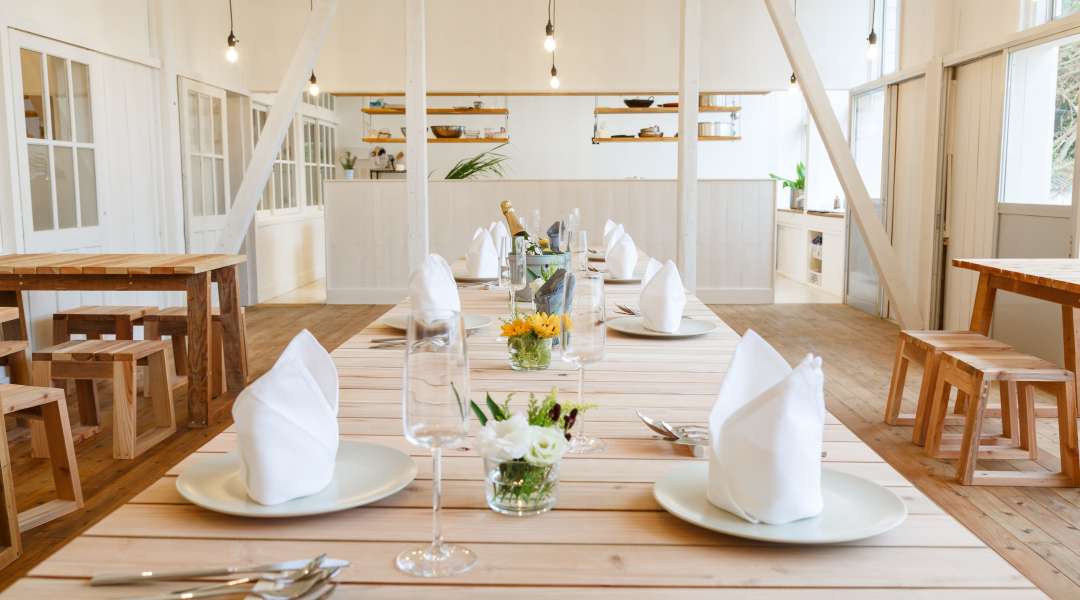 There are two accommodation plans that wondertrunk & co. can arrange. One is staying in glamping tents. The tents are all spacious and furnished, with a home-away-from home atmosphere, offering great relaxation. The other plan is staying in the renovated schoolhouse. Rooms have a private living dining / kitchen, bathroom, toilet and sink. It is a relaxing and thrilling experience to stay in a nostalgic building that was once a schoolhouse! Find more information about Nordisk Village here.
There are two accommodation plans that wondertrunk & co. can arrange. One is staying in glamping tents. The tents are all spacious and furnished, with a home-away-from home atmosphere, offering great relaxation. The other plan is staying in the renovated schoolhouse. Rooms have a private living dining / kitchen, bathroom, toilet and sink. It is a relaxing and thrilling experience to stay in a nostalgic building that was once a schoolhouse! Find more information about Nordisk Village here.
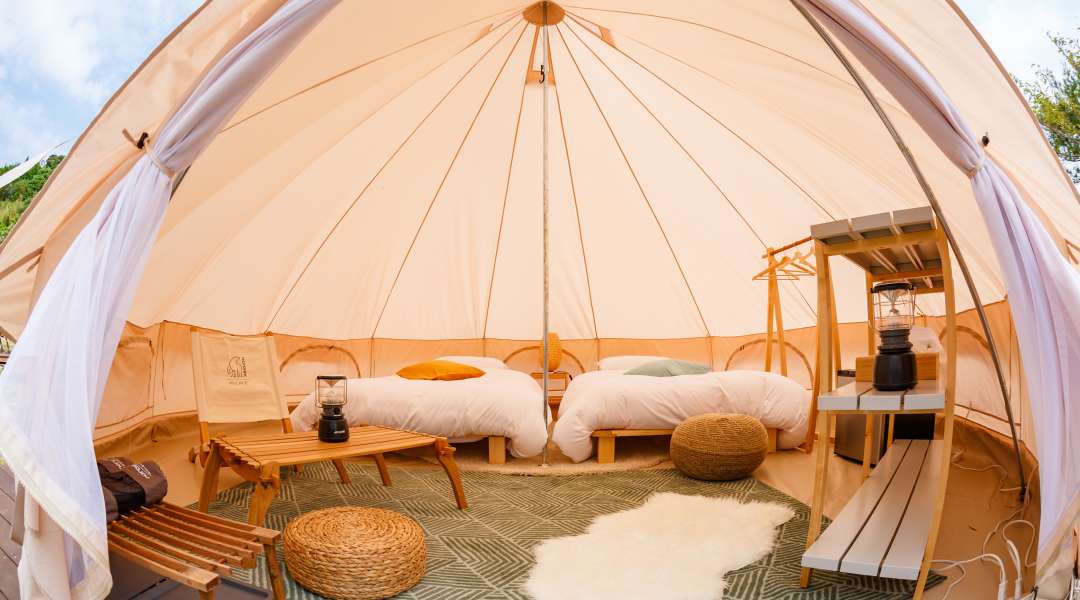 How has life on the islands changed since the local Hidden Christian sites were acknowledged by UNESCO as cultural world heritage in 2018?
The Goto islands have become more widely known and domestic travel agencies have created more travel products for visitors to the islands. However, it still definitely falls into the off-the-beaten path destination category. In 2019, just 1,567 international travellers visited the islands for a stay of at least one night. It is a perfect destination for travellers wanting to escape the crowds and enjoy the great outdoors.
How has life on the islands changed since the local Hidden Christian sites were acknowledged by UNESCO as cultural world heritage in 2018?
The Goto islands have become more widely known and domestic travel agencies have created more travel products for visitors to the islands. However, it still definitely falls into the off-the-beaten path destination category. In 2019, just 1,567 international travellers visited the islands for a stay of at least one night. It is a perfect destination for travellers wanting to escape the crowds and enjoy the great outdoors.
How has that changed again because of the coronavirus pandemic?
Before the pandemic, the Goto islands had been slowly getting more and more popular, not only as a place with significant cultural and historical ties, but as a place that was a “hidden gem” of sorts. Since the tourism industry of Goto plays a huge part in Goto’s economy, the pandemic slowed it down quite a bit. However, since it is a remote island, normal life carries on, while the worry is there, it hasn’t consumed me or my friends to the degree of big cities like Tokyo and Osaka.
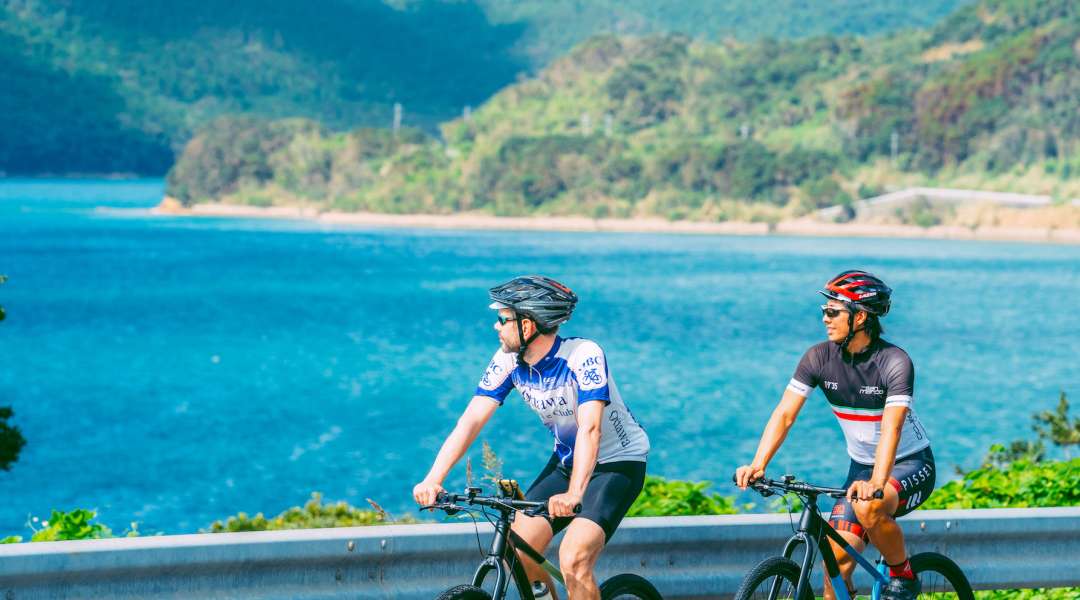
What sort of safety measures to prevent the spread of the pandemic have been introduced here on Goto Islands?
In terms of our cycling tours, we provide hand-disinfectant to everyone visiting us, as well as checking body temperature with a device that specializes in checking body temperature. Our bikes are also disinfected and kept clean. We also strongly advocate the wearing of masks. Since cycling is physically intensive, we don’t require always wearing a mask while cycling since it does restrict airflow. Fortunately, cycling is a sport that is done in the outdoors, which provides everyone with free flowing air and space to safely move around.
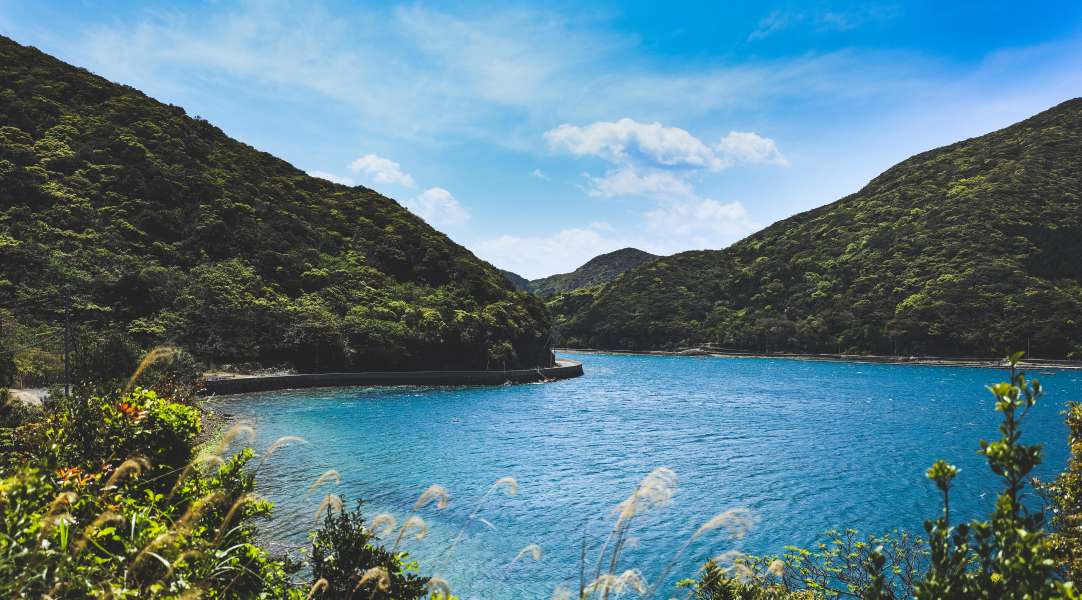
Wondertrunk& co. own and manage a bakery named ‘wondertrunk travel-bakery’’ in Fukue. The bakery not only produces delicious breads and pastries, but also acts as a travel concierge service, including offering rental bicycles and electric cars for exploring the islands. At the bakery, we also provide hand-disinfectant to the customers visiting us and staff always wear masks in dealing with customers. Pastries are covered with transparent sheets and frequent ventilation is done.
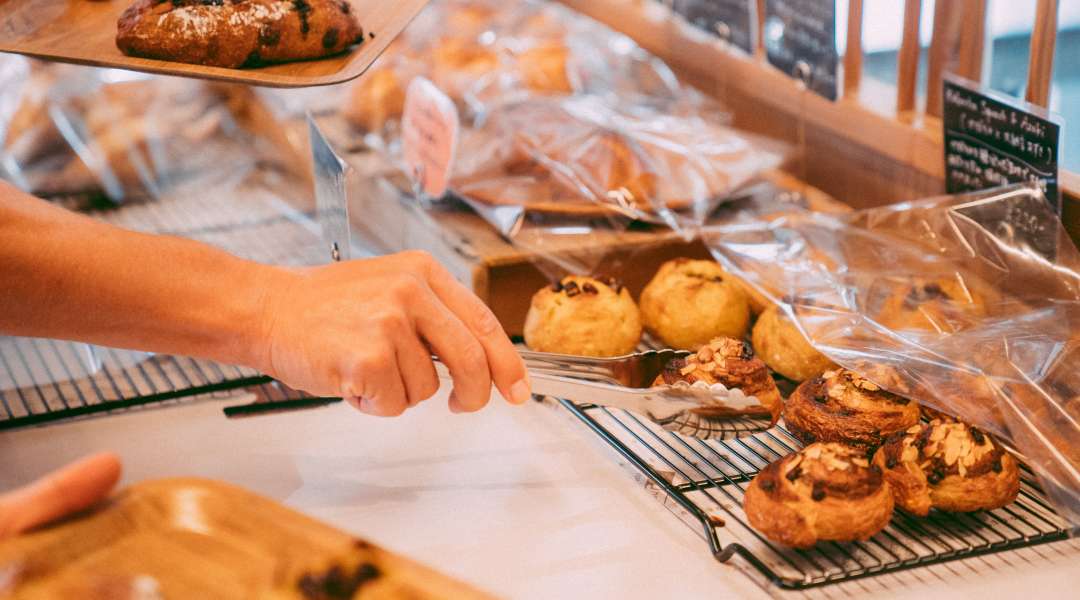
Which season do you most recommend to people thinking about planning to stay here?
I personally love cycling in the fall. The temperature is just right and the air is crisp and refreshing. Seeing the rice fields turning a shade of yellow for the harvest season is just an amazing scene to cycle through. However, all seasons have special offerings. Summer is wonderful for stops along the ocean and other bodies of water located within the island. It is a bit busy in the summer, but the charm of Goto is that you can always find a special place for privacy by the ocean. The spring offers wonderful cycling by the cherry blossoms, and since the ocean is always nearby, those who have seasonal allergies can relax in the outdoors a bit easier than in the cities on the mainland. Winter is never too cold on the island, and the seascape by the island’s lava coastlines is the most dynamic compared with the other seasons.
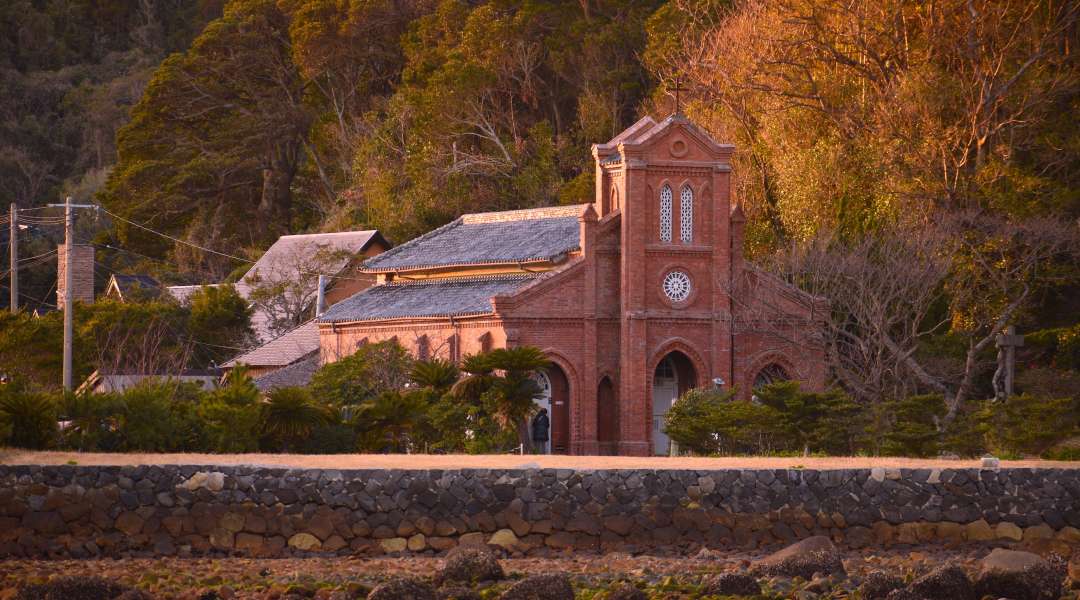
There is always something new to experience as the scenery and foods change with the seasons. In the summer you can appreciate beautiful landscapes and enjoy swimming, paddle boarding and kayaking. In the rice planting season, sceneries are reflected in the water of the rice paddies. In autumn, you can have freshly picked rice and winter is the best season to taste fish.
Do you have any tips for people planning to cycle in Japan?
I highly recommend doing research on the location you want to cycle in Japan, as well as considering cycling with a guide, especially if you want to go off the beaten path. Japanese is a challenging language, so a guide can help translate and even connect you with the locals that can lead to some unforgettable memories and adventures. Also, most likely than not, they are your ticket to areas that even some locals don’t know, and which are also even hidden from huge map databases such as google maps.
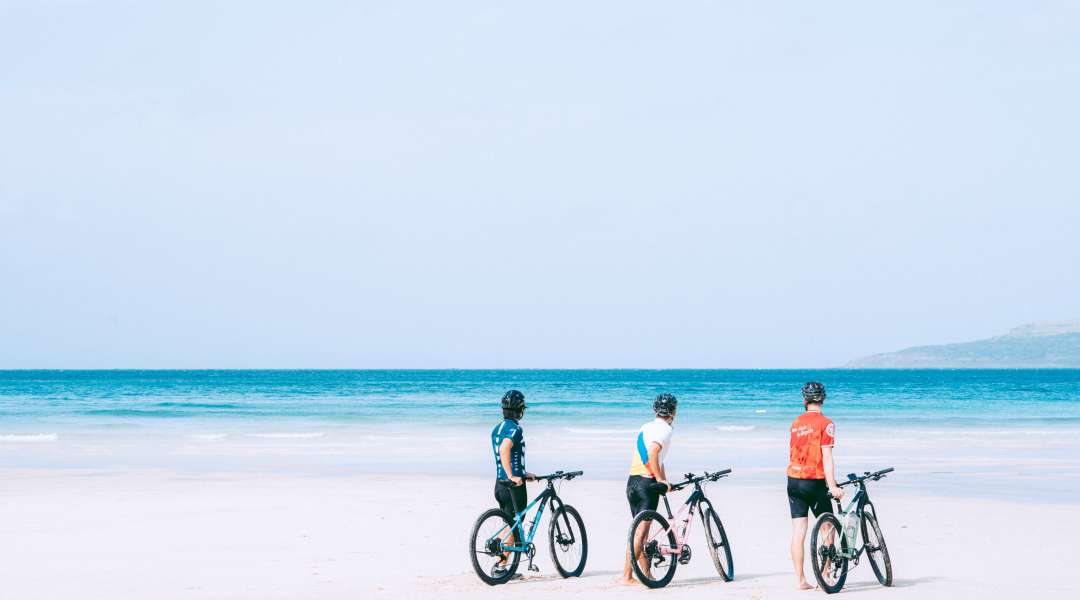 People from the UK usually visit Japan for between 2 to 3 weeks. How do you recommend they can combine a visit to Goto Islands with their trip?
I recommend going to Tokyo and Kyoto the first couple of days. These places are very well accustomed to visitors to Japan, especially for first-time visitors. That being said, they can be incredibly crowded. After the first couple of days in Tokyo and Kyoto, I would then suggest heading to Fukuoka in the Kyushu area, where you can spend a day or two, and head to the Goto Islands from Fukuoka airport. I would say two to three days on Goto as a minimum, there are many things to do such as fishing, diving, and of course my favourite, cycling. From the islands, you can head back to the mainland. The islands are a chance to immerse yourselves in the unspoilt nature of Japan, while places such as Tokyo showcase Japan’s modernity and Kyoto, tradition and history.
People from the UK usually visit Japan for between 2 to 3 weeks. How do you recommend they can combine a visit to Goto Islands with their trip?
I recommend going to Tokyo and Kyoto the first couple of days. These places are very well accustomed to visitors to Japan, especially for first-time visitors. That being said, they can be incredibly crowded. After the first couple of days in Tokyo and Kyoto, I would then suggest heading to Fukuoka in the Kyushu area, where you can spend a day or two, and head to the Goto Islands from Fukuoka airport. I would say two to three days on Goto as a minimum, there are many things to do such as fishing, diving, and of course my favourite, cycling. From the islands, you can head back to the mainland. The islands are a chance to immerse yourselves in the unspoilt nature of Japan, while places such as Tokyo showcase Japan’s modernity and Kyoto, tradition and history.
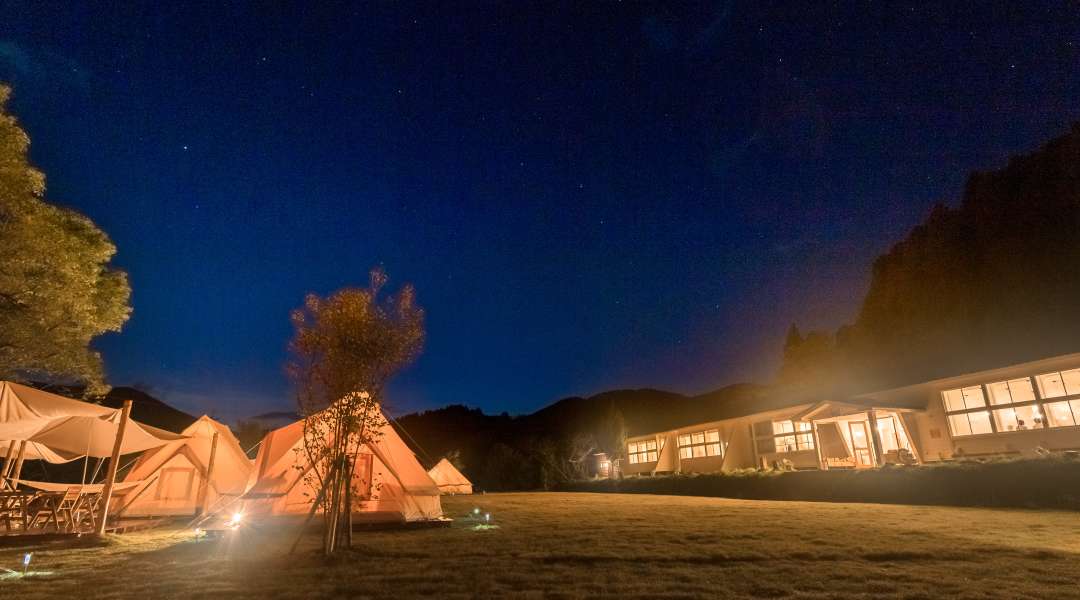 Find out more about wondertrunk & co’s cycling and camping experiences in the Goto Islands here.
Find out more about wondertrunk & co’s cycling and camping experiences in the Goto Islands here. While travel to Japan is not possible, wondertrunk & co. are doing ‘digital journeys’ through Japan, introducing lesser-known parts of the coof tuntry on Instagram. Take a look at photos from the summer to see more he Goto Islands and start following to join their latest online journey through Hokkaido. Or if you'd like to find out more about the other islands that Japan has to offer, island experts and professional photographers Ippei and Janine share some insight into some of the country's most remote destinations, here.


























































